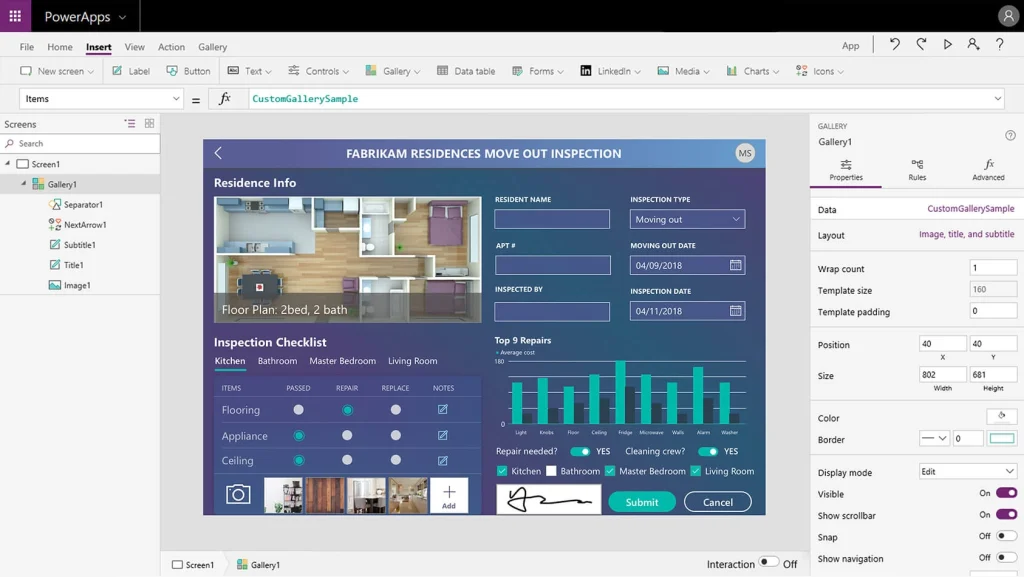The “low-tech” side of public sector
The digital landscape of the public sector remains peppered with relics from past decades. While business world is flooded with new technology everyday, the public sector fall behind in adopting them into their work.
Many governmental organizations are equipped with outdated systems, which can date back 10 to 30 years. These system lack contemporary features like artificial intelligence, machine learning, and robotic process automation. At the same time, they aren’t designed for integration, leading to a disjointed IT ecosystem. Officers have to switch back and forth between tools, extending their workloads and slowing down their performance.
As a result, citizen has to wait longer or being put in delays for a services or paperwork. This sluggish contributes to public frustration and unsolved problems, ultimately eroding citizen trust in governmental services.

Adding to the challenge is the budgetary constraints that frequently overshadow the technology adoption. The financial allocation is limited, hence, technology isn’t the primary concerns.
Moreover, the public sector faces a shortage of talented IT professionals who are often lured away by private companies opportunities, leaving limited tech expertise within government organizations.
Considering low-code?
At its core, low-code is a development approach that allow users to create applications with minimal hand-coding. How low-code does it? Well, through visual interfaces, drag-and-drop tools, and pre-built code blocks. It can significantly reduce the need for traditional coding.
This accessibility is a game-changer, as it means that departments can now take more ownership of their application development, freeing up their IT teams to focus on more complex tasks. At the same time, non-coders and citizen developers can partake in producing enterprise-grade applications.
So, why should the public sector consider it? And what features should you look out for?
- Accessibility: This inclusivity ensures that departments aren’t solely reliant on their IT teams, freeing them for more complex tasks.
- Drag-and-Drop Pre-built Code Blocks: The bedrock of low-code, this feature streamlines application creation and ensures code reusability across projects.
- Design Templates: A vast library of templates allows for professional-looking applications, which can be customized to align with brand aesthetics.
- Access Control: Control who interacts with your applications, which is essential to maintain data integrity and security.
- Hosting Flexibility: Depending on organizational needs, choose between on-premises, cloud, or hybrid hosting.
- Scalability: As your organization grows, your chosen platform should be able to handle increased loads without faltering.
Want to learn more? Everything You Need to Know About Low-Code: Types & Use Cases
How low-code helps public sector fights silos
In an era where digitization is omnipresent, the public sector is still under the radar with legacy systems and siloed operations. Here’s how using low-code for public sector can transform these barriers.
1. Provide agility and flexibility in digital transformation
In the fast-paced world, time is of the essence. Low-code offers a rapid development environment that allows government agencies to deploy digital solutions faster than traditional coding. This speed advantage ensures that essential services and applications can be rolled out quickly.
Change is inevitable in the public sphere, with policies, regulations, and citizen needs continuously evolving. Low-code’s flexibility empowers the public sector to adapt swiftly and effectively. Agencies can adjust applications with minimal disruptions. With this ability, you can keep pace with changing requirements and ensure they remain relevant and practical.
At the same time, public officers aren’t programmers. Yet, low-code allows them to build applications by drag-and-drop. This freedom to explore opens the door to continuous improvement, pushing agencies to transform digitally.
2. Get closer to citizens
Just as the other sector has set high standards for digital experiences, citizens now expect a similar caliber from public services. Low-code platforms make it feasible for the public sector to design user-centric apps, such as Omni-Channel Interactions and Cloud-Powered Engagement.

Using low-code in public sector, you can offer multiple interaction channels, from web portals to mobile apps, ensuring citizens can access services anytime, anywhere.
3. Improve your process
Low-code platforms equipped with process mining tools which you can create a visual workflow representation. You can quickly identify process bottlenecks and areas that might have been overlooked. But of course, before a process can be automated and integrated, it have to be standardized.
Whether it’s an internal tool for employees or an external application for citizens, the low-code platform’s emphasis on user experience. This means it is designed with the end user in mind, leading to higher satisfaction and adoption rates.
4. Other benefits
Besides these amazing features, there are other things that you can appreciate:
- Citizen developers and public officers can demonstrate innovative ideas by building a prototype and wireframe. They can also use it to explain ideas for developers, connecting business ideas with technical aspects.
- Low-code has built-in connectors and APIs, which you can use to connect with other systems to gather data automatically. Instead of relying on intuition or outdated reports, decisions can be based on current data, leading to better outcomes.
- At the same time, different departments can collaborate more efficiently, recognizing common challenges and working together to address them. It fosters a culture of transparency and shared responsibility.
The power of low-code is vast, but it’s not always perfect. Explore both sides of low-code: its pros & cons
What public sector can build with low-code
By simplifying and democratizing software development, low-code empower agencies to innovate, engage, and serve their constituencies better.
Here are some of the exciting possibilities:
Citizen-facing services
With low-code, you can quickly change a traditional paper-based systems to an online and simplified process.
Admit it. We all hate it when you must line up for hours to apply for a license or remit fines. Not to mention dozens of paperwork, mundane tasks, and moving between public offices tire us out.
Examples of what public sector can use low-code for:
- Web-based portals that citizens can access, fill out a form at home, and check their paperwork progress.
- Chatbots and FAQ web pages to answer questions for citizens. Discover 10 Low-code Chatbot Platforms That Modify Customer Services.
- Voting apps
Modernize legacy IT
Here’s where low-code platforms come into play, serving as the linchpin between the old and the new. They seamlessly interface with these aging systems, extracting and utilizing data without a hitch.
Furthermore, in a world dominated by mobile devices, ensuring services are mobile-friendly is non-negotiable. Low-code platforms rise to the occasion by designing responsive, mobile-optimized interfaces, thus ensuring that the public sector can access services anytime, anywhere, and on any device.
What you can do:
- A document management system to track and save files
- Task management system
- Low-code internal tools to use in a department or cross-department
- Using low-code to build automation tools
- Combine low-code with data science to build analytics tools
Optimize planning processes
By harnessing the prowess of low-code platforms, agencies can curate platforms dedicated to public consultations. Such platforms can foster productive dialogues on urban planning, infrastructural metamorphosis, and other pivotal initiatives.
Some advanced low-code platforms allow you to embed AI, machine learning or predictive analytics into your applications. This does not only improve the apps’ performance but also aids leaders in making strategic and data-driven decisions.
Real-life use cases of low-code in public sector
Several governmental agencies swiftly delivered public safety and international operations services by leveraging low-code. Here’s a spotlight on a notable success story:
During the initial wave of the pandemic in 2020, the DoS recognized the need for a comprehensive platform to guide its diplomats. The objective was to create a system that informed them about the Covid-19 regulations in every country, ensuring their safety and adherence to local guidelines.
Using a prominent low-code platform, the DoS was able to roll out nearly a dozen essential applications within weeks. These tools collectively monitored:
- Covid-19 requirements in each country.
- Quarantine mandates and specifics are based on origin and destination countries.
- Detailed phases and statuses for each nation and U.S. post.
With the agility of the low-code, the DoS not only quickly developed these applications but also continually refined them based on evolving needs.
One Vietnamese government office also leveraged Microsoft PowerApps low-code to craft a Document Management System within weeks (with help from Synodus experts, of course!)
The public sector usually gets flooded with piles of paperwork and spreadsheets, making it prone to loss and error when extracting information. At the same time, gathering and analyzing data is much more time-consuming where everything is dispersed.
With our custom low-code development services for the public sector, the clients successfully removed tedious paper-process with high-performing PowerApps-based DMS, managing all the data in one place. The system, directly integrated with Microsoft 365, automatically saves and synchronizes files, ensuring everything is tracked.
And, of course, Synodus is always ready for a quick chat, if you’re interested in building a low-code solution for your public office!
Best low-code platforms to serve public agencies
Here’s a closer look at some leading low-code platforms well-suited for public agencies:

- Microsoft PowerApps: This web-based low-code tool runs flawlessly across mobile platforms and integrates seamlessly with Microsoft Azure, offering automation capabilities. With its vast learning resources and easy data system integration, it caters to beginners and professionals, although the initial setup might challenge the former. Our review of PowerApps!
- Mendix: Designed for agile app development, Mendix employs visual modeling applications and ensures cloud-native deployment. Its secure data system integrations and diverse app development support are commendable. With an active community backing it, Mendix promises accelerated app development across platforms.
- OutSystems: A robust platform, OutSystems offers impressive database synchronization, cloud deployment, and offline functionalities. Its standout feature is the integration with device-specific traits. While it boasts efficient error management and ready database connectors, some users may find room for improvement in web service integrations.
- GeneXus: Pioneering in digital process automation with BPM support, GeneXus incorporates AI-driven app creation and boasts versatility in deployment options. Its broad application support makes it a go-to choice for varied businesses. GeneXus is admired for its system compatibility, offering solutions for diverse business sizes, though complex developments might take longer than anticipated.
- Salesforce Lightning: Prioritizing mobile app creation and user experiences, Salesforce Lightning turns spreadsheets into apps swiftly and integrates visual workflows seamlessly. It stands out for its business and contact management tools, prioritizing user access control and security. However, areas like UI and API integration need a bit more polish. Our review of Salesforce!
- Oracle APEX: Redefining adaptability with its search and data-sharing features, Oracle APEX specializes in transforming spreadsheets into applications. Its PWA capabilities and extensions for various software solutions make it a strong contender. While it offers an intuitive design and real-time collaboration tools, advanced users might wish for more intricate in-built reporting functionalities.
Not only recognized as Microsoft Partner, but we also support Salesforce in Low-code Development. Our low-code experts have worked with multiple businesses, from startups to enterprises to tailor-made applications, business automation and internal tools.
Give us a chat!
Wrapping up
Low-code platforms are revolutionizing the way public agencies approach digital solutions. They offer the flexibility to customize, scale, and rapidly deploy applications, bridging the gap between intricate technical processes and the pressing public sector needs. Each low-code public sector platform presents its unique strengths, tailored to cater to various levels of complexity and user expertise.
As the technological landscape continues to evolve, it becomes imperative for public agencies to embrace these platforms, ensuring agile, cost-effective, and innovative service delivery. Making an informed choice now can set the foundation for sustained success in the digital age.
More related posts from Low-code blog you shouldn’t skip:
- 5 Ways Low-code Disrupts Digital Transformation & What You Can Learn
- Comparison of Low-code Developer Salary Between Countries
- 5 Potential Security Risks of Low-code & How To Address Them
How useful was this post?
Click on a star to rate it!
Average rating / 5. Vote count:
No votes so far! Be the first to rate this post.




